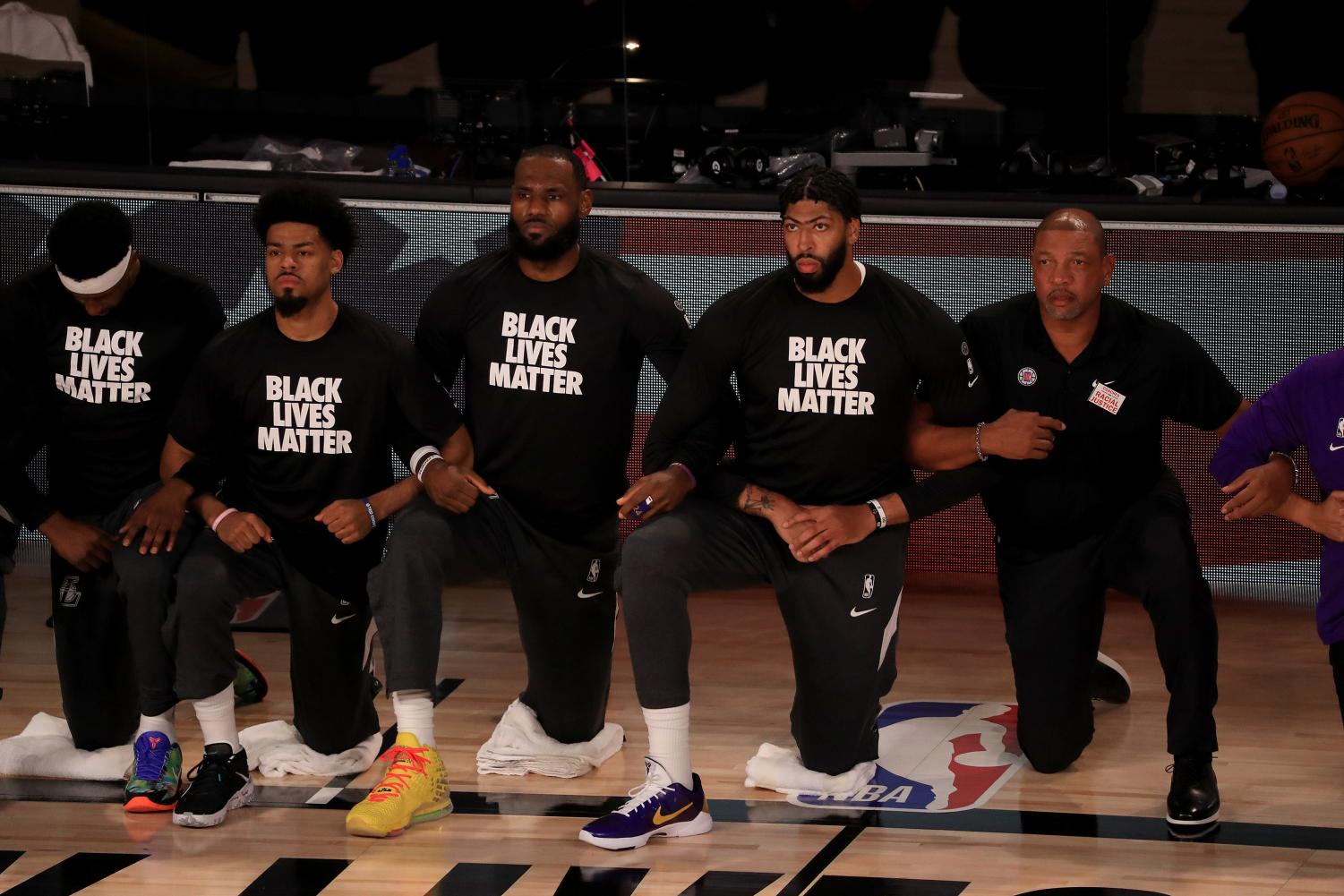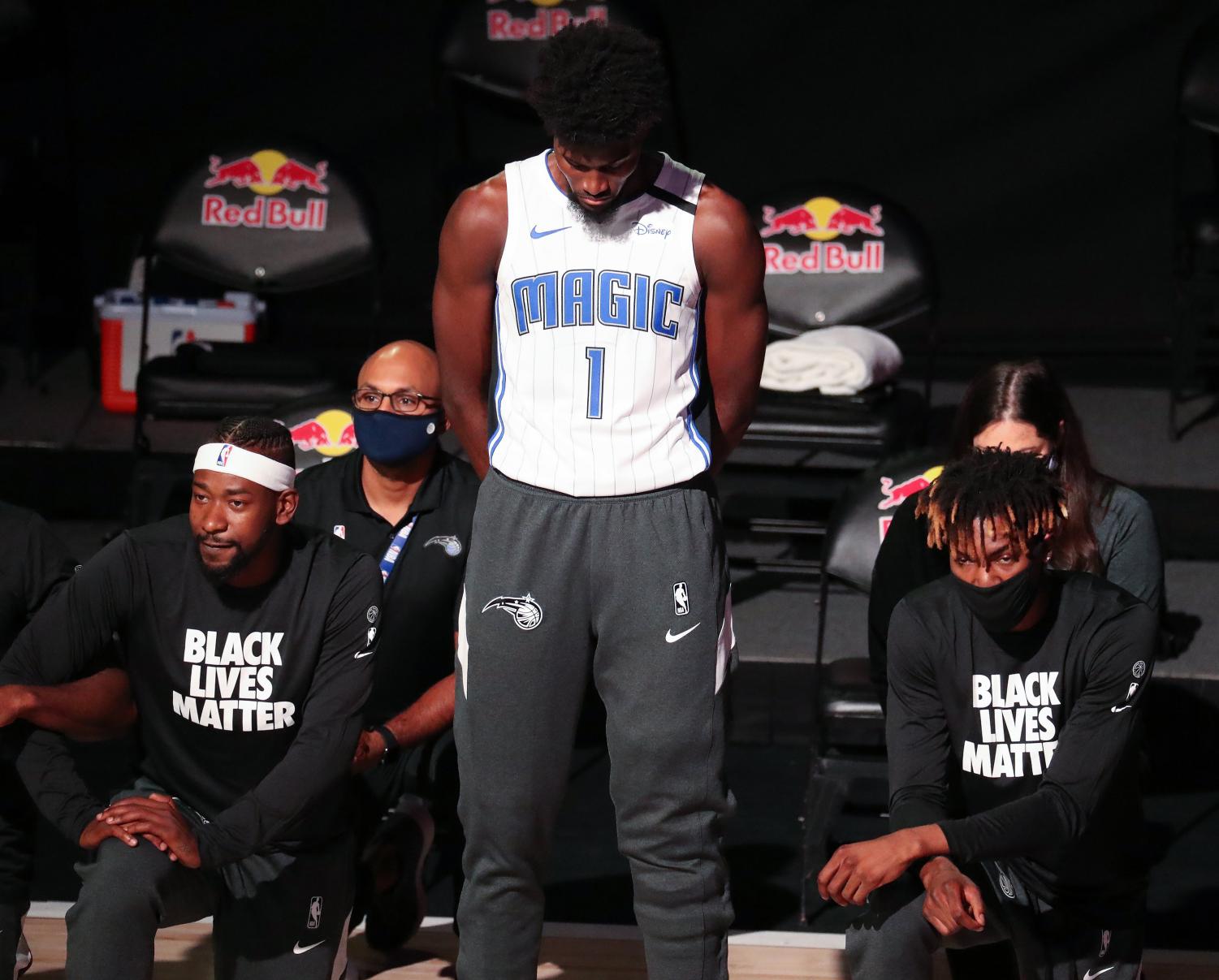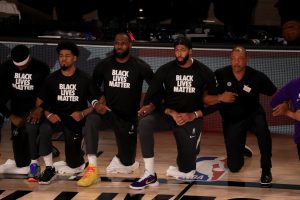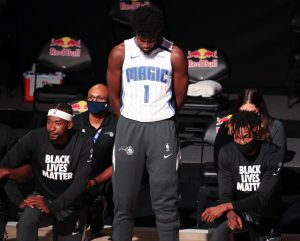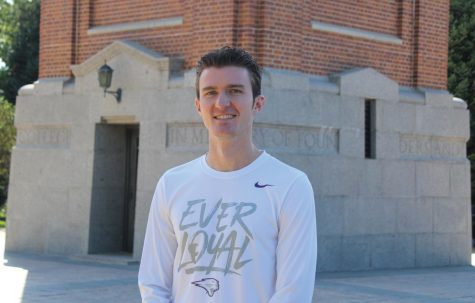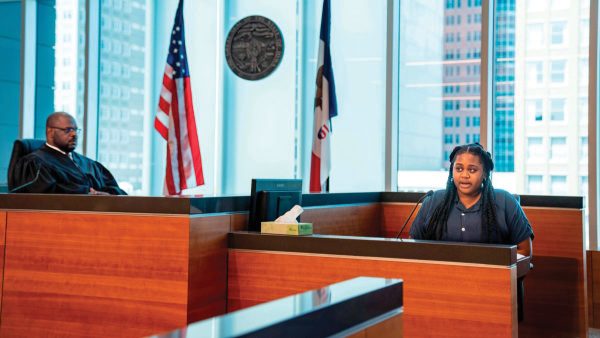Athletes need to do more to see desired change
Sep 3, 2020
If you’ve followed the newly revived sports world recently, then chances are you’ve been exposed to the many social justice messages from athletes regarding the recent racial unrest in the United States in the year 2020. The NBA has been allowing players to put social justice messages such as “Black Lives Matter” or “Equality” on the back of their jerseys in the Orlando bubble setup. The NFL has announced that they will play the Black national anthem before every single week one game this season, in response to the requests of many Black players. And before the first games of the NBA’s bubble, MLB’s Opening Day and many other sports leagues, multiple teams and players took a knee during the national anthem before the game, in solidarity with the racial unrest in the country. While I believe that it’s acceptable for professional athletes to bring attention to causes they believe in, the manner in which they are currently doing so is not doing much to bring about change.
Most of the protesting and calls for social justice seen nowadays in professional sports stems from former NFL quarterback Colin Kaepernick, when he began kneeling during the national anthem during the 2016-17 season. Kaepernick claims he was trying to bring attention to social issues such as police brutality and racial oppression of minorities in the United States, but never seemed to have a specific issue he was looking to resolve. Regardless of his motivation, he started a trend that to this day is still prevalent in sports: athletes protesting during the national anthem. When Kaepernick started doing it, he was the first of his kind and it was almost unheard of. Nowadays, there are players such as Jonathan Issac of the Orlando Magic or Sam Coonrod of the San Francisco Giants who are criticized by some because they didn’t take a knee for the anthem. In a matter of just a few years, players protesting while in the field of play has become the norm.
Professional athletes, while sometimes perceived as superhuman due to their extraordinary athletic ability, have all of the same rights as anyone else to bring attention to an issue. However, they have also been bestowed with more wealth and fame than most people will ever know. This gives these people an incredible opportunity to use their spotlight for real change, yet many simply go along with the national trends without actually doing what is necessary to bring change in the issues they see. Kneeling for the national anthem is a whole other debate, but regardless of which side one is on I believe that it does little to actually solve the issues that many professional athletes are protesting. Putting the phrase “Black Lives Matter” on your jersey or on the court for NBA games might bring awareness to an organization or cause, but does little to actually change anything. Instead of using hashtags and shouting slogans, outspoken professional athletes such as LeBron James and Stephen Curry should use their platforms to work with people who can actually bring their messages into reality. Meeting with their elected leaders and legislators, bringing certain issues to the attention of these leaders and hashing out specific details on reforms they want to accomplish is a much better way of going about a movement, rather than sitting on the sidelines and tweeting hashtags.
Professional athletes have enough of a following and enough leverage that they could easily meet with elected leaders and work with them to make change in the world that they wish to see. But until enough athletes collectively decide to do this, I believe that their ideas will not become a reality. Kneeling for the national anthem and sitting on Twitter will only go so far: actually having a specific list of ideas and goals and working with the people who can bring said goals into reality would be a much better way of going about it. Until this is acted upon, nothing will change.


